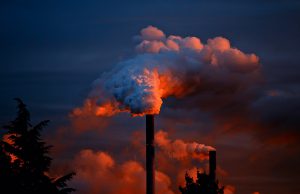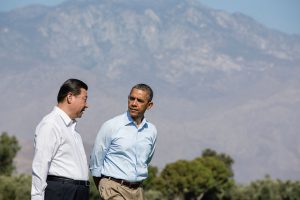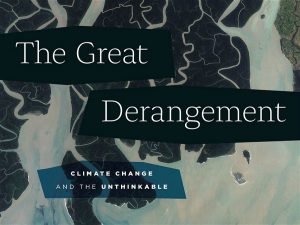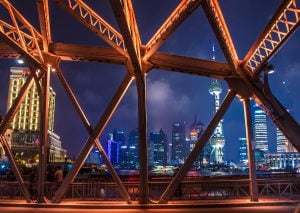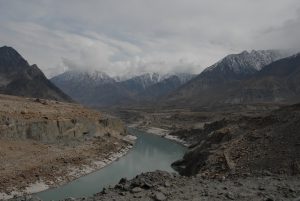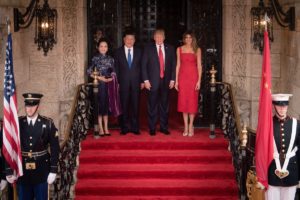At the recent meeting of presidents Donald Trump and Xi Jinping at Mar-a-Lago, climate change was sidelined in favour of trade and national security discussions despite it being a major area of cooperation between the US and China in recent years.
Switching roles
The stance of each country on climate change seems to have flipped in the last few years, and spurred by Trump’s abandonment of the issue, the Chinese are now calling for “Western opinion…to…pressure the Trump administration on climate change.”
President Trump has set about dismantling his predecessor’s climate policies. Last month he issued an executive order, essentially a memo from the president to his cabinet, instructing the Environmental Protection Agency to rewrite Obama’s Clean Power Plan, revise emissions standards for new coal plants, and undo regulations on methane emissions; to calculate a new Social Cost of Carbon; lift a moratorium on coal mining on federal lands; and to disregard climate change in other areas of national policymaking.
China, on the other hand, is searching for new partners in its global climate efforts, and President Xi has vigorously defended the Paris Agreement, saying, in a thinly veiled warning to the Trump administration, that the landmark climate agreement must not be “derailed.”
Chinese officials have also used popular media to scold President Trump and remind Americans of the Republican Party’s historic leadership in climate change diplomacy.
The irony of this role reversal is not lost on journalists and political commentators. “China poised to take lead on climate after Trump’s move to undo policies,” reported the New York Times recently. While CNN asked, “Can China pick up US slack on climate change?”
According to the Chinese, the answer is “no”. Calling the Trump administration’s attitude “selfish,” a Chinese state-run newspaper recently declared, “No matter how hard Beijing tries it won’t be able to take on all the responsibilities that Washington refuses to.”
Words versus deeds
These statements are, in part, political deflection from Beijing, as the government tries to dampen expectations and downplay its own agenda with characteristic humility. Yet China demurring to accept the title of global leader on climate change points to an important distinction when discussing leadership: that of diplomatic leadership – leading from the pulpit – and actualised leadership – leading by doing.
President Trump has entirely ceded the US diplomatic climate leadership that Obama had carefully cultivated during his two terms in office. Whereas the Obama administration worked with China and other countries to nurture a global movement to tackle climate change, the new government promises to abandon all multilateral diplomacy and fight to impede local climate efforts.
The Trump administration is also endeavouring to abandon the US’s actual leadership, as proved by the recent executive order.
America, however, is like a massive ship. It has its own momentum and inertia, and its course will not be easily changed. The country’s distinct form of federalism limits presidential power on domestic issues to a greater extent than most people realise.
While Trump begins to roll back Obama’s vehicle fuel efficiency standards, California is pushing ahead with the country’s toughest tailpipe emissions standards. And while there is no near-term hope for a federal cap on carbon, the Regional Greenhouse Gas Initiative, a market-based programme to reduce greenhouse gas emissions, has expanded to nine northeastern states.
Among America’s fifty states, thirty-seven have some sort of renewable energy or portfolio standard.
In addition to these political and legal realities, global economic trends provide tailwinds for clean energy in the US. Renewable energy production accounts for the vast majority of new jobs in the energy sector; in fact, solar power employs more people than the highly automated oil, coal, and gas industries combined. Trump can only try to hide these trends and slow their progress, but, as President Obama wrote in Science Magazine, no president can halt clean energy’s steady march.
China is helping to drive renewable energy’s global expansion, taking the country’s actual climate leadership beyond mere rhetoric. This year, the government will establish a national carbon trading market, which with three to five billion tonnes of annual carbon allowances, will be the largest carbon market in the world.
China also plans to invest US$361 billion in renewable energy by 2020, and its one-party system ensures that no shift in the political winds can prevent these outlays.
These climate leadership benchmarks belie the fact that China is a developing middle income country with per capita income about one-seventh that of the United States. “China will remain the world’s biggest developing country for a long time,” said a recent state-sponsored editorial. “How can it be expected to sacrifice its own development space for developed Western powerhouses?”
There is a bit of coyness in this statement, yet there is also a kernel of truth. Despite China’s massive investments in renewable energy, the country is still investing in coal and exporting it. Coal power capacity in China is expected to increase by 19% in the next five years, and renewable power production will account for only 15% of the nation’s energy consumption by 2020.
The government has plans to clean the air, yet China today has the deadliest air pollution of any country – one in five deaths attributed to noxious air.
Could China lead the world from the middle of the pack? Leading from behind would be uncharted territory for China and antithetical to its historically understated style of international diplomacy.
This is China’s dilemma: needing to sustain rapid development while simultaneously filling a climate leadership vacuum. The tension limits the country’s ability to lead on climate. “China is not the kind of leader in terms of climate change that will pull other countries along,” said Lauri Myllyvirta, a senior member of Greenpeace in Beijing.
In truth, no country or group of countries can fill the leadership void left by a US retreat from climate action. China will lead only in the areas where it can practically do so – for instance in renewable energy investment.
Presidents Trump and Xi may not have discussed climate change at their meeting in Palm Beach, Florida but as the oceans lap at the shores of both countries in an age of rising seas, subnational jurisdictions, non-government groups, and pioneering businesses will push forward in pursuit of a better climate future.
This decentralised leadership will have to suffice until a more forward thinking administration takes the helm of the US.
Yaolin Zhang, a joint Yale-NUS and NUS Law Student contributed research to this piece.
